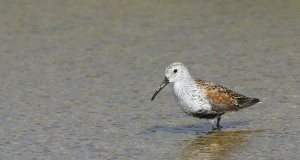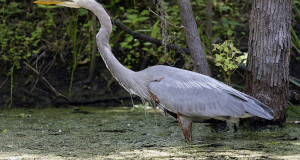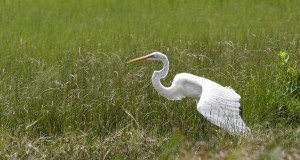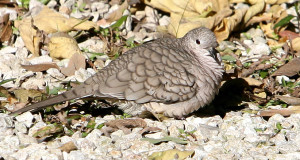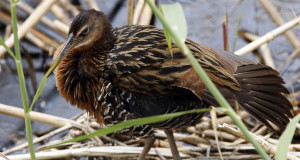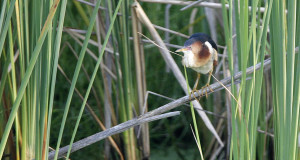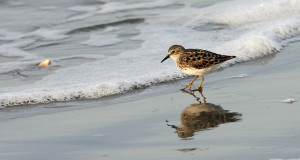Common Moorhens forage in freshwater marshes, ponds and lazy rivers, walking and swimming in aquatic vegetation, picking at seeds, snails, grasses and aquatic insects.
Read More »Common Tern
Common Terns fly buoyantly along the shoreline and rivers, using their long, pointed wings to make graceful turns, hover and plunge headlong into the water in pursuit of small fish.
Read More »Dunlin
Dunlins forage on Gulf Coast beaches and mudflats, both alone and in large flocks in the hundreds. During breeding season they are hard to mistake for other shorebirds, with their long, drooping bill, rufous plumage and distinctive black patch on their belly.
Read More »Great Blue Heron
Great Blue Herons are the largest of the herons, flying majestically with strong, steady beats of their enormous wings. They typically feed alone while wading slowly in the quiet waters of a marsh or slough, often standing upright and motionless as they search the surrounding water for prey.
Read More »Great Egret
Great Egrets have a long, thin neck and strong, tapered bill ideal for striking at prey from a distance.
Read More »Inca Dove
Inca Doves are small and slender with distinctive, scalloped light brown plumage and a long, square tail.
Read More »King Rail
King Rails are shy and usually found in the dense vegetation of freshwater marshes, where their colors blend in with the background. You're more likely to hear them than see them.
Read More »Laughing Gull
Laughing Gulls are beggars, scavengers and thieves. They'll entice handouts from visitors on the beach or people hanging off the stern a boat. They'll rummage through a garbage dump or steal food from the bills of pelicans, terns and other shorebirds.
Read More »Least Bittern
Least Bitterns crouch deep among the reeds of marshes and other wetlands, so unobtrusive that you're likely to flush them before you see them.
Read More »Least Sandpiper
Least Sandpipers are the smallest of the shorebirds - the smallest of the "peeps". They are readily identifiable by their diminutive stature and yellow legs, distinguishing them from the slightly larger and black-legged Semipalmated and Western sandpipers.
Read More »

